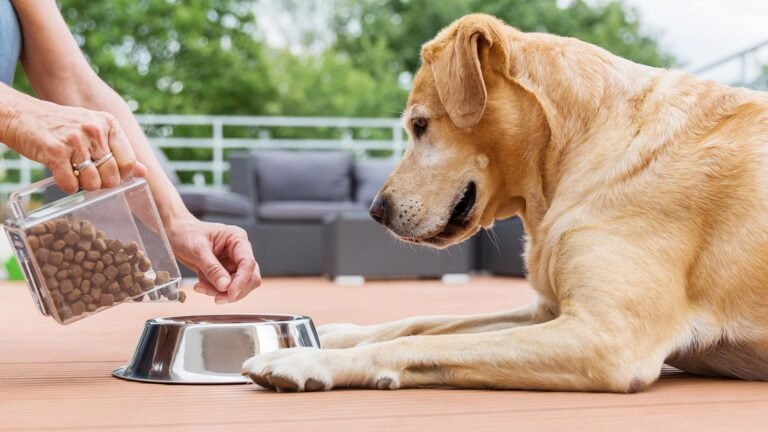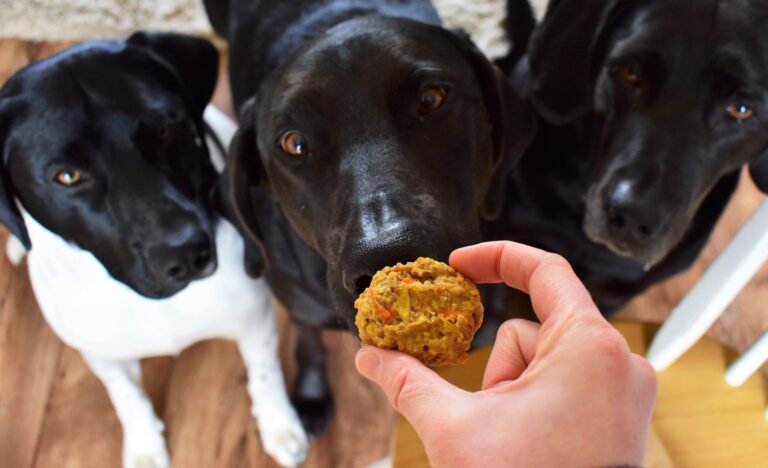Top Recipes for Your Labrador Retriever

Feeding your Labrador Retriever the right diet is crucial for their overall health, energy, and happiness. While commercial dog food is convenient, nothing beats the quality and care that goes into a homemade meal. Not only can you ensure that your dog is getting the best ingredients, but you can also tailor the recipes to meet their specific nutritional needs. In this post, we’ll share some of the top homemade recipes for your Labrador Retriever that are both nutritious and delicious.
Recipe 1: Classic Chicken and Rice
Ingredients:
- 2 cups of boneless, skinless chicken breast
- 1 cup of brown rice
- 1/2 cup of carrots, chopped
- 1/2 cup of green beans, chopped
Preparation Steps:
- Begin by preparing the brown rice as directed on the package.
- While the rice is cooking, boil the chicken breast until fully cooked, then shred it into small pieces.
- Steam the carrots and green beans until they are soft.
- Combine the cooked rice, shredded chicken, and steamed vegetables in a large bowl. Mix well.
- Let the mixture cool before serving it to your Labrador.
Nutritional Benefits:
This recipe is packed with lean protein from the chicken, which supports muscle growth and maintenance. Brown rice provides a healthy source of carbohydrates, ensuring your dog has plenty of energy, while carrots and green beans add essential vitamins and fiber.
Recipe 2: Beef and Sweet Potato Delight
Ingredients:
- 1 pound of lean ground beef
- 1 cup of sweet potatoes, peeled and cubed
- 1/2 cup of peas
- 1/2 cup of spinach, chopped
Preparation Steps:
- Brown the ground beef in a pan, draining off any excess fat.
- Boil the sweet potatoes until they are tender, then mash them.
- Steam the peas and spinach until they are soft.
- Mix the cooked beef, mashed sweet potatoes, and steamed vegetables together.
- Let the mixture cool down before serving it to your dog.
Nutritional Benefits:
This recipe provides a hearty meal with plenty of protein and iron from the beef, which is essential for maintaining strong muscles. Sweet potatoes are a great source of vitamins A and C, while peas and spinach offer fiber and additional vitamins for overall health.
Recipe 3: Fish and Veggie Feast
Ingredients:
- 2 fillets of salmon or whitefish
- 1 cup of spinach, chopped
- 1/2 cup of carrots, sliced
- 1/2 cup of brown rice
Preparation Steps:
- Prepare the brown rice by following the instructions on the package.
- Bake the fish fillets in the oven at 350°F for 20-25 minutes, or until fully cooked.
- Steam the spinach and carrots until soft.
- Flake the fish into small pieces and mix with the rice and vegetables.
- Let the meal cool before serving.
Nutritional Benefits:
Salmon is rich in omega-3 fatty acids, which are great for your Labrador’s skin and coat, as well as joint health. The combination of spinach and carrots adds essential vitamins and antioxidants, while brown rice provides sustained energy.
Recipe 4: Turkey and Quinoa Mix
Ingredients:
- 1 pound of ground turkey
- 1 cup of quinoa
- 1/2 cup of green beans, chopped
- 1/2 cup of zucchini, diced
Preparation Steps:
- Cook the quinoa according to the package instructions.
- Brown the ground turkey in a pan, ensuring it’s fully cooked.
- Steam the green beans and zucchini until they are tender.
- Combine the cooked turkey, quinoa, and vegetables in a bowl, mixing thoroughly.
- Cool the mixture before feeding it to your Labrador.
Nutritional Benefits:
Turkey is a lean source of protein, helping to build and maintain muscle. Quinoa is a gluten-free grain that’s packed with protein and essential amino acids. Green beans and zucchini add fiber and vitamins to keep your dog’s digestive system healthy.
Recipe 5: Lamb and Brown Rice Bowl
Ingredients:
- 1 pound of ground lamb
- 1 cup of brown rice
- 1/2 cup of broccoli, chopped
- 1/2 cup of pumpkin puree
Preparation Steps:
- Prepare the brown rice following the directions on the package
- Brown the ground lamb in a pan, draining any excess fat.
- Steam the broccoli until it’s soft.
- Mix the cooked lamb, rice, broccoli, and pumpkin puree together in a large bowl.
- Allow the food to cool before serving.
Nutritional Benefits:
Lamb is an excellent choice for dogs with sensitive stomachs or food allergies.It provides a valuable supply of protein and vital nutrients. Brown rice provides long-lasting energy, while broccoli and pumpkin add fiber and vitamins to support overall health.
Best Practices for Storing and Serving Homemade Dog Meals
Proper Storage:
After preparing these meals, store any leftovers in an airtight container in the refrigerator for up to three days. For longer storage, you can freeze individual portions in freezer-safe bags or containers for up to three months. Thaw frozen meals in the refrigerator overnight before serving.
Portion Control:
It’s important to feed your Labrador the right amount of food based on their age, weight, and activity level. As a general rule, adult Labradors need about 2 to 3 cups of homemade food per day, divided into two meals. Adjust portion sizes as needed, and consult with your vet to ensure your dog is receiving balanced nutrition.
Serving Suggestions:
Rotate different recipes to keep your dog’s diet varied and exciting. You can also mix homemade food with a portion of their regular kibble to add flavor and nutrition.
Common Mistakes to Avoid
Skipping Key Nutrients:
When making homemade dog food, it’s crucial to ensure the meals are balanced. Missing out on key nutrients like calcium, phosphorus, or certain vitamins can lead to health issues. Consider adding a vet-recommended supplement to your dog’s diet to cover any gaps.
Using Harmful Ingredients:
Steer clear of ingredients that can be harmful to dogs, including onions, garlic, chocolate, grapes, and specific spices.Always double-check ingredients before including them in your homemade recipes.
Ignoring Food Allergies:
Some Labradors may have food allergies or sensitivities. Watch for signs like itching, ear infections, or gastrointestinal issues. If you suspect your dog has a food allergy, consult your vet to identify the problematic ingredient and adjust their diet accordingly.
Conclusion
Feeding your Labrador Retriever homemade meals is a wonderful way to ensure they’re getting the best nutrition possible. With these top recipes, you can provide balanced, delicious meals that cater to your dog’s specific needs. Ready to get cooking? Share your favorite recipes or any questions you have in the comments below—let’s keep our pups happy and healthy together!





